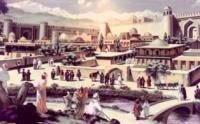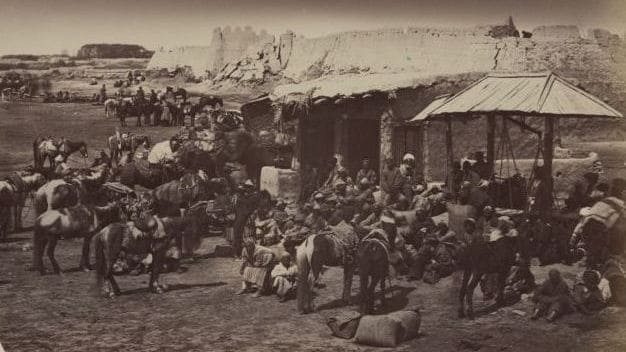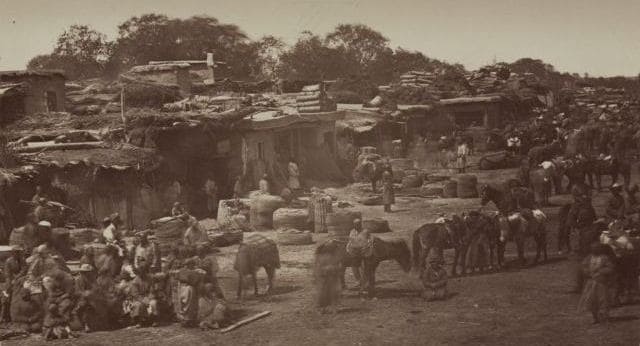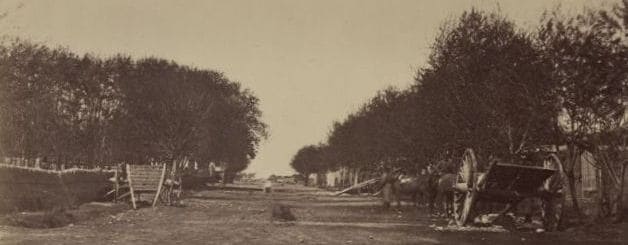You are here
Ancient settlement Taraz.

Tours on ancient sites of ancient settlement of Taraz.
“For those who are lost, there will always be cities that feel like home”
Simon Van Booy.
TakeTours and Book Tours Kazakhstan.
The ancient settlement of Taraz is a unique archeological monument. Cultural layers of Taraz dates back to the I - XIX centuries and reflect entire history of Kazakhstan. Findings of the Xth - XIIthcenturies – the time of the town’s prosperity – are of prominent interest.
Medieval Taraz was located in the territory of the nowadays central market around Mirzoyan, Tole by and Baizakov streets. The fundamental explorations of the Taraz settlement started in 2011. The ancient settlement of Taraz was situated in crossings of trade ways.
It consisted on citadel, rabad and shahrestan. Citadel and shahrestan of Taraz surrounded with walls as well as bath-house were in the territory of currentCentral market. In the place of diggings were found fragments of ceramics with writings in Arabic, pieces of ceramic crockery with images of crux.
It serves as an evidence of peaceful coexistence of religions and confessions. In the south-east part of the citadel was located eastern bath-house. Inner walls of the premise consisted of dressing room, washing rooms, and rooms for procedures.
Second bath-house of Kali-Yunus was situated in opposite up the street of Baizak Batyr. It was of jblong form and build of burnt bricks. Ten premises of various types connect with arched passes were preserved in it. In some of the premises of the bath-house were conserved multicolored paintings on the walls – eight-pointed yellow stars in red and pink background encircled with black and arranged in chess order.
The premises were overarched with dooms decorated inside with arches and figured exedras. Moreover, ruins of ancient madrasah, large town main line and remainders of ancient water pipe were found in the territory of the settlement.
In serves as an evidence of high level of cultural development in medieval Taraz.
Buildings of square organzine gum bricks dating back to the times of Sakas and Wusuns were also found there. The digging layers consisted of various unique ceramics: think wall parts covered with white and pink engobe. The history of ancient Taraz settlement started with settlements of Saka and Wusun tribes.
In the middle-ages the town became the station of one of the directions of the Great Silk Way. Firstly it belonged to Karluks, later became the center of the Kara-Khanid Khanate. In the XI - XII century Taraz reached prosperity. In 1212 the town was demolished to escape the Mongolian capture.
In the XII century was restored and during centuries various towns and settlements were formed in this place. The explorations of the ancient Taraz in the place of the Central market of the modern city began after the market was relocated.
During this time many archeological findings were discovered.
There were found 33 thousand fragments of ceramics, 33 coins (one of them is gold), 26 handiworks of glass. Total area of excavations is 2550 square meters.




Authority:
«The guidebook on Taraz and Zhambyl areas». The edition of department on tourism and sports Zhambyl of area. http://culturemap.kz
Photos:by:
Photos are used from «The Turkestan Album», 1870 - 1872. The first governor general of Turkestan created under the order Konstantin Petrovich Fon Kaufman. «The Turkestan album» includes four parts: archaeological (two volumes), ethnographic (two volumes), crafts of the people of Central Asia (trade) and historical part. Albums have been created under the direction of the Russian ethnographer and researcher A.L.Kun. Besides over albums worked: military orientalist Т.A. Terentyev, photographers N.N.Nekhoroshev, G.E.Krivtsov, etc. the photographers who have embodied kinds of streets, markets and the areas of cities, settlements and nomad camp; in portraits - persons, types of the Central Asian nationalities; national games, customs and traditions and many other things. Thus, the given photo album has collected in itself documentary certificates then yet not studied region of Central Asia (second half of XIX-th century), on purpose to characterise household life of the settled and nomadic population of Turkestan edge. Gathering of materials for the multivolume edition more than two years (1870 - 1872) It was carried out in military-topographical department of Tashkent. The album in St.Petersburg in 1872 has been published. «The Turkestan album» is today the rare archival source which editions are in National Library of Uzbekistan, National Library of Russia and in library of the Congress of the USA.







